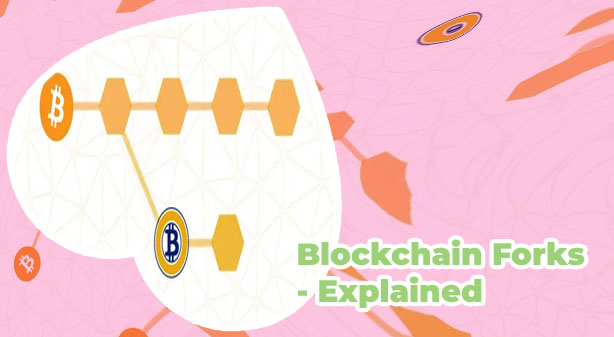Fork crypto

MoneyHero post-IPO? “Now we scale”
Bitcoin Cash (BCH) is a perfect example of a controversial hard fork. The separation from the main Bitcoin chain took place on August 1, 2017, at block No. 478558. A small part of the BTC community did not agree to implement the SegWit upgrades. Once they knew they couldn’t persuade the majority of BTC miners, a new cryptocurrency (BCH) and a blockchain were created. A year later, this Bitcoin fork met its own hard fork, currently known as Bitcoin SV. Fork crypto Taylor, who headed blockchain projects at Barclays until last month, says incidents like the DAO hack and the hard fork only underscore the need for banks and other regulated institutions to build their own private blockchains. Banks can reduce the threat of a community decision being implemented without their support. “If you want results now, the answer must be to build a for asset transfer,” Taylor says. “This is undoubtedly the right choice for financial institutions.”
What is a fork in crypto
BSV has made aggressive strides in block size enhancement, escalating to a block size of 128 MB shortly after its inception and later removing the block size cap altogether. BSV's focus is on restoring certain protocol features from the original Bitcoin protocol and massively scaling the network to accommodate a vast number of transactions. Cryptocurrency Hard Forks vs. Airdrops: An Overview A UASF is a soft fork activated by full nodes and not a protocol’s network miners. Generally, blockchain forks are signalled and set in motion by miners leveraging their hash-power to vote. Proposals conducted this way hold the possibility of disagreement amongst the broader community or blockchain economy (i,e individual users, wallet providers, exchanges and other entities). The nature of a soft fork upgrade aims to be backwards-compatible with existing protocol rules. To minimise the authority of miners interfering with these updates, full nodes would signal and activate these upgrades instead – theoretically forcing miners to accept new protocols.

Intended soft forks splitting from the most-work block
If the changes cause the protocol to operate in a fundamentally different way from the original, then the new protocol may split from the old one, resulting in two separate protocols and, in turn, two separate blockchains and coins. This is the difference between a “soft fork” and a “hard fork.” Hard and Soft Forks: A Detailed and Simplified Explanation of How Blockchains Evolve The term “fork” is common to any software developer, as a fork is simply a copy of a codebase or repository intended to be refactored or reworked. Forks allow developers to experiment freely with code without affecting the original, underlying source code. This is especially helpful with open-source projects, which attract a community of developers eager to add features or remove bugs from public code repositories.
Cryptocurrency forks
In blockchain technology that underpins cryptocurrencies, a hard fork or (hardfork) refers to a radical change to the protocols of a blockchain network. In simple terms, a hard fork splits a single cryptocurrency into two and can results in the validation of blocks and transactions that were previously invalid, or valid. As such, it requires that all developers upgrade to the latest version of the protocol software. 3.2. Information Asymmetry/Volume/Microstructure Hypotheses The need for forking in blockchain growing along with technology adaptation to the various business industries. That is why we want to turn your attention to the question of how to create your own cryptocurrency by forking an existing blockchain, such as the Ethereum blockchain. We will analyze a few current successful solutions and provide step-by-step guidance on how to fork Ethereum and customize it to create your own blockchain-based project.
- Payment in cryptocurrency
- Cryptocurrency bitcoin price
- Buy dogecoin
- Where to buy new crypto coins
- Akoin crypto
- Buy dogecoin paypal
- Cryptocom sell to fiat wallet
- Crypto exchange
- Polygon crypto
- Bitcoin cryptocurrency
- Create cryptocurrency
- Inu passes no cryptocurrency
- Best crypto buying platform
- Cryptocom news
- Maker crypto price
- How many btc are there
- Shibusd crypto
- How to invest in cryptocom
- Bitcoin trend
- How much is dogecoin
- Cryptocom card
- Wallet crypto
- Apps cryptocurrency
- Crypto coin wallet
- How to fund crypto com account
- Btc live price
- Crypto com earn
- Coinbase cryptocurrency prices
- Who owns crypto com
- Cryptocom app review
- Best way to buy bitcoin
- Crypto rewards credit card
- New crypto to buy
- 1 btc in usd
- Crypto nft app
- Cryptocurrency prices
- How to buy tectonic crypto
- When will all btc be mined
- Btc vs dollar
- Dogecoin price usd
- Crypto to buy now
- Best broker to buy dogecoin
- How to withdraw money from cryptocom
- Crypto fees
- Staking crypto
- Cryptos
- Buy bitcoin online
- Nano crypto price
- Market cap of crypto
- How does btc mining work
- Can you buy dogecoin on cryptocom
- The crypto
- Where to buy crypto
- Launching dedicated crypto team its push